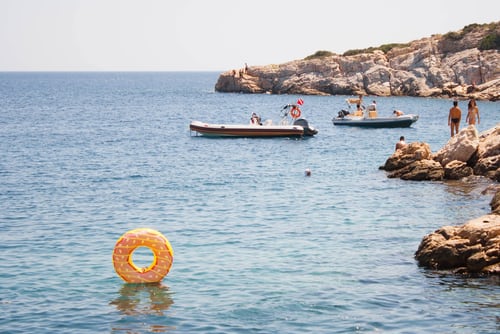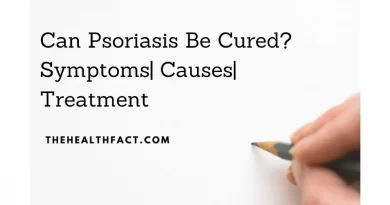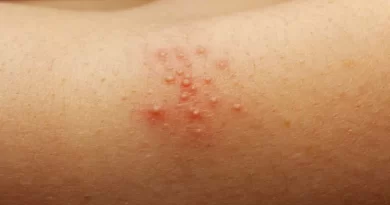Sea Lice: What are These and How to Get Rid of Them
Table of Contents
Overview
Are you a beach lover? Or do you love swimming? Well, no doubt both things are interesting and enjoyable. But have you got any consequences from staying near the beach like being bitten by sea lice which immediately causes you to feel itchy and irritated? So, if yes you should know about this more and if not then this article is for you. We will discuss what sea lice are and how you can get rid of them. Also what do they do with your bodies.
What Is Sea Lice?
Sea lice is a type of skin irritation caused due to the larvae of jellyfish underneath the bathing suits either in the swimming pool or the ocean. The intense pressure on the larvae makes them release inflammatory pricking cells that tend to cause itching, irritation, and red bumps over the skin.
A typical sea lice size range is from 0.5-2 cm and they feed on the mucus, blood of fish, and skin.
Doctors often call it a bather’s eruption or pica-pica, which means itchy-itchy in Spanish. Don’t relate these lice with that of head lice, although they are called sea lice. طريقة المراهنات في كرة القدم Actual lice bite fish only.
When the skin irritation reaches mild to moderate levels, it often leads to severe side effects like a fever in children. Sea lice were identified in areas of the southern coast of Florida and also have been identified in tropical and subtropical regions across the world. Outbreaks of sea lice are worst between March to August.
Let’s talk about its symptoms.
Symptoms
You will feel symptoms of red bumps immediately after getting into the water. Firstly you will feel a prickling sensation and the skin will start to itch. Some other symptoms may include:-
- Headaches
- Nausea
- Lethargy
- Red bumps immediately form a mass of red big bumps
- Rash underneath where a bathing suit would be
Well, the jellyfish are usually fond of hair, which is why most people find the bumps behind the back of the neck. But again, they are not related to head lice even though they stick to hair.
Also read: do I have fungal acne
The rash stays for about two to four days. Though some people may feel the rash from sea lice for up to two weeks. Children are highly prone to severe symptoms related to sea lice including nausea and high fever.
Causes
These eruptions of sea lice usually occur during the summer months when winds bring paper-weighted jellyfish larvae near the shoreline. These are more common in palm beach and Broward counties in Florida.
While you are swimming these larvae get trapped inside your swimsuit. The larvae consist of stinging cells called nematocysts. And when they rub against your skin you feel skin irritation which is called sea lice bites.
However, wearing tight swimsuits could make the bite worse due to excess friction, similar to rubbing a towel against the skin.
Possibly you can get sea lice to bite through re-wearing an unwashed swimsuit because the stinging cells aren’t dead, and still stay on your costume.
Treatment
You can use over-the-counter treatments for sea lice. For example, you can use 1% hydrocortisone cream over the areas of the bite two to three times a day. Continue this for 1-2 weeks and you will surely get the results. Hydrocortisone is a steroidal cream used for reducing inflammation and itching.
Other options you can try are:-
- You can apply diluted vinegar or rub alcohol over the affected areas to soothe them.
- Apply cold compression over the irritated areas
- You can take NSAIDs –anti-inflammatory non-steroidal oral drugs like ibuprofen or aspirin to reduce the pain and inflammation. However, children below years should avoid taking aspirin.
In some cases, a person is severely affected by sea lice bites and will need medical care immediately. They will be prescribed with oral corticosteroids like prednisolone. And with the treatment inflammation and itching will go away within 4 days. موقع بوكر
Is Sea Lice Contagious?
No, they aren’t contagious. If you have a sea lice bite rash, you cannot pass it to another person.
Nonetheless, if you have borrowed a swimsuit or given it to some else without washing it, then it can irritate due to the cells left inside the swimsuit. That’s why you should always wash your swimsuit and dry it before using it again or giving it to someone.
How Can You Prevent Sea Lice From Bites?
Well if there are larvae present in the water you can do few things to get rid of them, other than avoiding going into the water. Some people used to wear barrier cream to prevent bites before swimming. But most people are still affected by it.
Swimmers are more vulnerable to getting the sea lice bite, as the jellyfish live on the surface of the water. So the first thing you can do is to pay attention to the warning signs and lifeguard stations before getting in the water. beaches usually have warning boards if there is sea lice infestation in the sea.
The quick thing you can do is to change your outfit immediately after swimming and wash it before wearing it again. Bath with normal water and gently pat your skin without rubbing. And the more advanced method you can use is to use a sea lice repellent which is a non-toxic waterproof repellent that works against sea lice.
Conclusion
Sea lice are the larvae of jellyfish that stay on the surface of the water and bite you while swimming. The after-effects can be seen as rashes, inflammation, and intense itching on the area of biting. You should wash your swimsuit before wearing it again to prevent bites. 1xbet.com If you have got the bite you can use over-the-counter anti-inflammatory medicines. In severe cases, your doctor may prescribe you oral corticosteroids.
Frequently Asked Questions:-
What does sea lice do to humans?
Sea lice cause a completely irritated response after they bite. It can cause inflammation and rashes over the site of the bite. In severe cases, it can also cause nausea, chills, fever, headache, and abdominal pain. Some people need medical treatment in serious cases. Especially when you already have sea lice bite and sting again.
Are sea lice on salmon harmful to humans?
No, it’s not harmful but even the minor lesions of sea lice can make the salmon unwanted and unmarketable. Sea lice have been common for many years in the sea industry unfortunately and adapted a place on salmon.
Are sea lice parasites?
Sea lice are external parasites that feed over mucus, the blood of host marine fish, and epidermal tissue.
What happens if you eat sea lice?
No, there is no harm in eating fish that do have sea lice over it. It was witnessed by the food authorities on the website Matportalen who writes that the salmon who have sea lice or have had it are fully edible.
How do I get rid of sea lice?
The best way to get rid of sea lice is through over-the-counter treatments. You can buy 1% hydrocortisone cream over the affected areas two to three times a day for 1-2 weeks. It will help you in reducing itching and inflammation.
How do you know if you have sea lice?
The irritated rashes will appear within 4-14 hours you swim. The bite will feel like a prickling sensation in the water while larvae release their toxins. Usually, you will observe the rashes in the parts covered by your swimsuit. Also, you will see the spots on your arms, legs, neck, and armpits.
How do I get rid of Seabather’s eruption?
Sea bather’s eruption is self-treatable and is not contagious. The bite needs only symptomatic treatment, for example for a mild to moderate condition you will need home remedies such as cold compression or hydrocortisone cream.
What does lice look like?
You can compare lice to head lice, which you may see at the neck or over the ears. These small eggs look like tiny pussy willow buds the size of dandruff flakes and are visible on hair shafts. These are tiny parasitic creatures that feed on human blood.
How do you treat swimmer’s itch at home?
At home, you can treat it by bathing in Epsom salts or baking soda. Then apply baking soda over the rashes, which you primarily mixed with water along with stirring until it forms like a paste. Or you can use an anti-itch lotion.
Do all salmon have lice?
Sea lice mostly live on the salmon, specifically on pacific and Atlantic salmon but sometimes found on the three-spined stickleback. These lice feed on mucus, the blood of the fish, and the skin.



